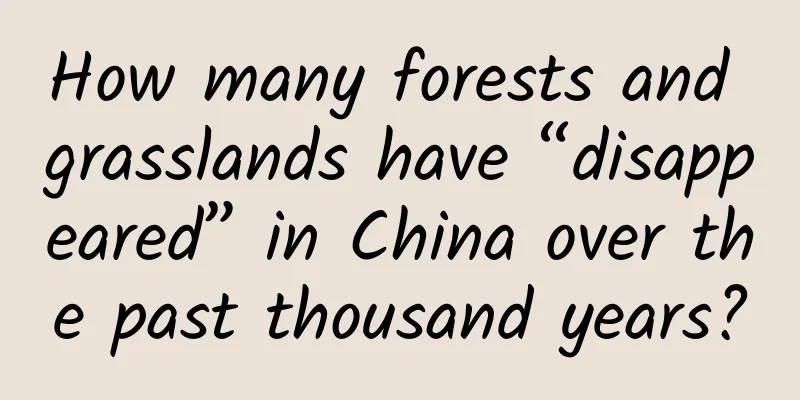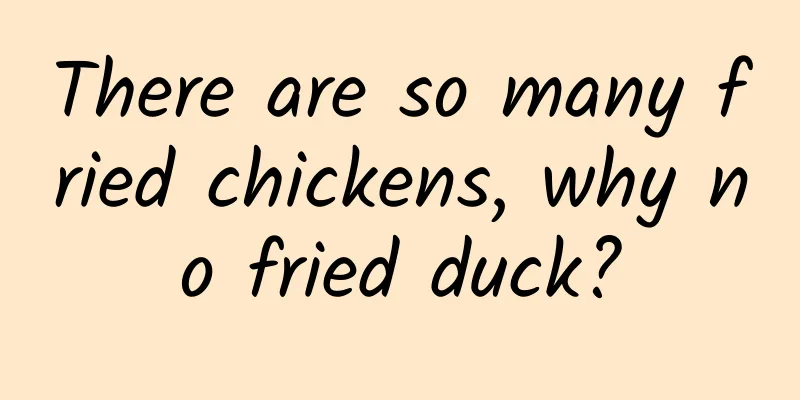How many forests and grasslands have “disappeared” in China over the past thousand years?

|
Changes in forest and grassland cover in historical periods are not only key indicators for quantitative research on ecological and environmental change processes, but also important basic data for long-term climate change simulation and terrestrial ecosystem carbon emission assessment. However, the reconstruction of China's historical land use/cover change is still extremely unbalanced. A large number of reconstruction results are concentrated on cultivated land, while the historical evolution of forest and grassland cover is still mainly qualitative. Quantitative reconstruction is currently limited to the past 300 years. The few quantitative studies involving longer periods are mostly based on empirical estimates or simple linear extrapolations. The quantitative reconstruction of China's historical forests and grasslands is still in its infancy, which is not conducive to a deep understanding of the process of human activities shaping the surface landscape in China's historical period and revealing the laws of historical climate and ecosystem evolution. A study recently published in Science China: Earth Sciences used the current land area of China as the research area and the past thousand years when population growth accelerated significantly and data accumulation was relatively rich as the research period. On the basis of objectively grasping the trend of forest and grassland changes and the main driving factors, the study used forest transformation theory and spatial substitution time and other methods to depict the inverted "S" curve of deforestation in China's historical period, and constructed a historical forest area retrospective reconstruction model based on the functional relationship between forest area and population change and a forest grid allocation model based on deforestation tendency. In view of the fact that grassland in the western region is mainly shrinking, while secondary grassland in the eastern region is increasing with the expansion of deforestation area, the cultivated land deduction method and habitat restriction method were constructed to reconstruct historical grassland cover respectively in the west and the east (Figure 1). The forest and grassland area change sequence of China's provinces and regions and the forest and grassland spatial distribution grid data products with an interval of 50 years and a spatial resolution of 10km were reconstructed. Fig. 1 The general idea of forest and grassland cover reconstruction in China's historical period Over the past millennium, China's forest coverage has dropped from 31% to 16%, with a forest loss of nearly 50% (Figure 2). The number of forests dropped to the lowest in the 1960s, with a coverage rate of only 9%. Between 1000 and 1960, the coverage rates of the main forest distribution areas, such as the middle and lower reaches of the Yellow River, the middle and lower reaches of the Yangtze River, the southern coastal areas, the southwest and the northeast, decreased by 27%, 40%, 58%, 55% and 35% respectively. Forest cover has experienced three stages: a slow decrease before the Qing Dynasty, a rapid decrease from the Qing Dynasty to the early days of the People's Republic of China, and a gradual recovery from the early days of the People's Republic of China to the present. The provincial forest area (Figure 3) and spatial distribution (Figure 4) better reflect the evolution of deforestation in China from plains to hills to mountains, and objectively reflect the characteristics of large-scale deforestation in history, which has expanded from the middle and lower reaches of the Yellow River to the middle and lower reaches of the Yangtze River, the southern coastal areas, the southwest and the northeast. Figure 2 Trends in forest and grassland area changes in China over the past millennium Figure 3 Trends in forest coverage by province in China over the past millennium Figure 4 Spatial distribution pattern of forests in China over the past millennium Over the past millennium, China's grassland coverage has dropped from 32% to 29%, which can be roughly divided into three stages: stable fluctuation, slow decrease and rapid decrease (Figure 2). During the millennium, the area of zonal native grassland in northern and western provinces such as Northeast China, Inner Mongolia, Gansu, Ningxia, Qinghai, Xinjiang and Tibet decreased by 28×106hm2, and the area reduction mainly occurred in the past 300 years; while the area of non-zonal secondary grassland scattered in the hilly and mountainous areas in the east and south increased by 0.3×106hm2 (Figures 5 and 6). Figure 5 Trends in grassland coverage in different regions of China over the past millennium Fig. 6 Spatial distribution pattern of grasslands in China over the past millennium The series of methods constructed using population data as proxy data can more objectively reproduce the spatiotemporal evolution of China's forest and grassland coverage over the past thousand years. The reconstruction method is feasible and effective, and has explored a new path for quantitatively reconstructing historical forest and grassland. For more details, please read the full article He Fanneng, Yang Fan, Wang Yafei. 2025. Reconstruction of forest and grassland area and spatial pattern in China over the past millennium. Science China: Earth Sciences, 55(1): 95–110. |
<<: Does mouth breathing cause a retracted chin? Children need to pay special attention
Recommend
Wuhan Tongka real-name authentication! How to download? How to use? Detailed guide attached!
Now Wuhan is gradually restoring its normal life....
From WAVE SUMMIT+2021, we are looking for the indispensable “gaze” of the new generation of AI people
When we talk about AI, we always associate it wit...
Low budget user growth model!
"Growth hacking" must be familiar to th...
Have you ever seen a railway that runs through the air and in a cave?
Vocabulary Logistics transportation completion an...
Are those health supplements that young people are flocking to really worth taking?
“Can health supplements help young people stay he...
More than 300 expressions! Cats are not as cool as you think
Science and Technology Daily, Beijing, November 1...
Advice from 5 senior APP promoters to practitioners
In the process of acquiring APP users, the compet...
Shishi SEO training: Website optimization and ranking is a complex but important task
Website optimization and ranking is a complex but...
Is Momo’s popularity due to the desire of strangers?
It is rare for a small company to attract as much...
How to enable showcase permissions on Douyin? What are the qualifications for opening a window display on Douyin?
What are the requirements for opening a product s...
How much does it cost to join a meat and poultry mini program in Hohhot?
What is the price for joining the Hohhot Meat and...
Operational strategies for low-cost customer acquisition in the education industry!
During the epidemic, after experiencing low conve...
How to use Zhihu promotion to efficiently attract targeted users?
“Zhihu, share your newly made story with the worl...
The first generation iPhone sold at a sky-high price. Outdated electronic products = garbage?
As we all know, the masterpieces left by masters ...
With the same 4GB of memory, why can the iPhone be used smoothly for 5 years, but Android cannot?
Looking back at some of my friends around me, unt...









